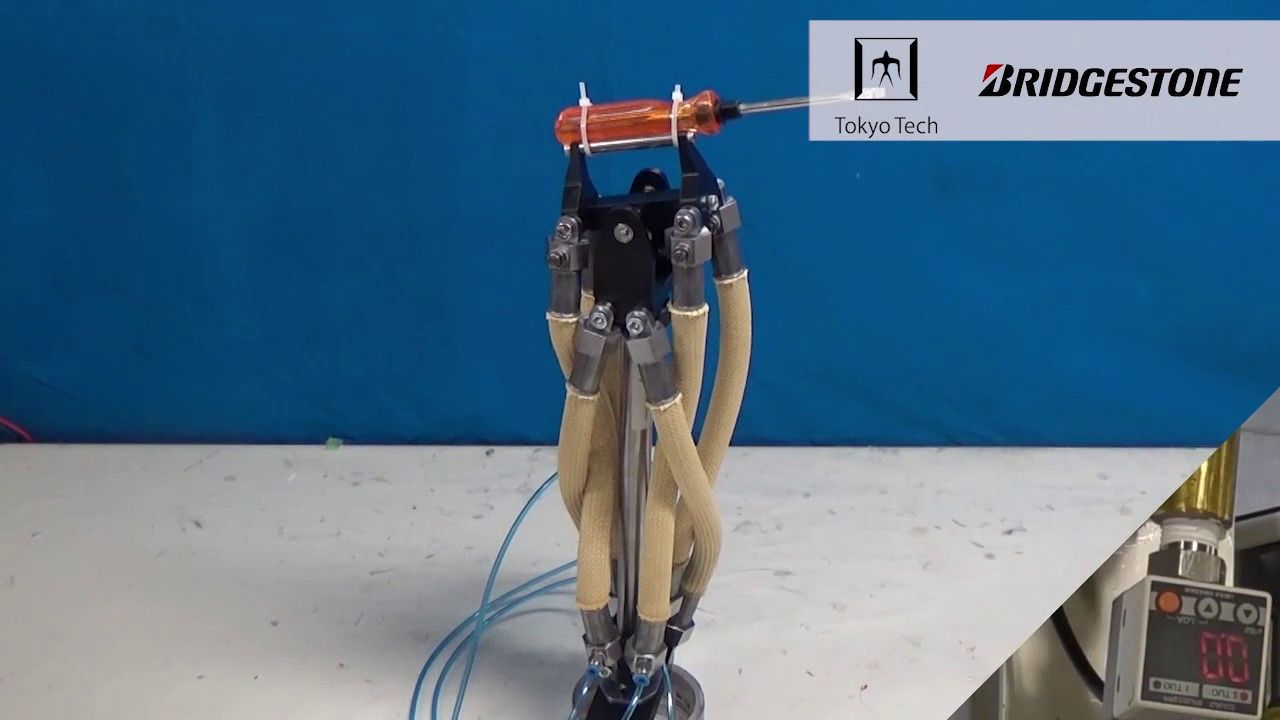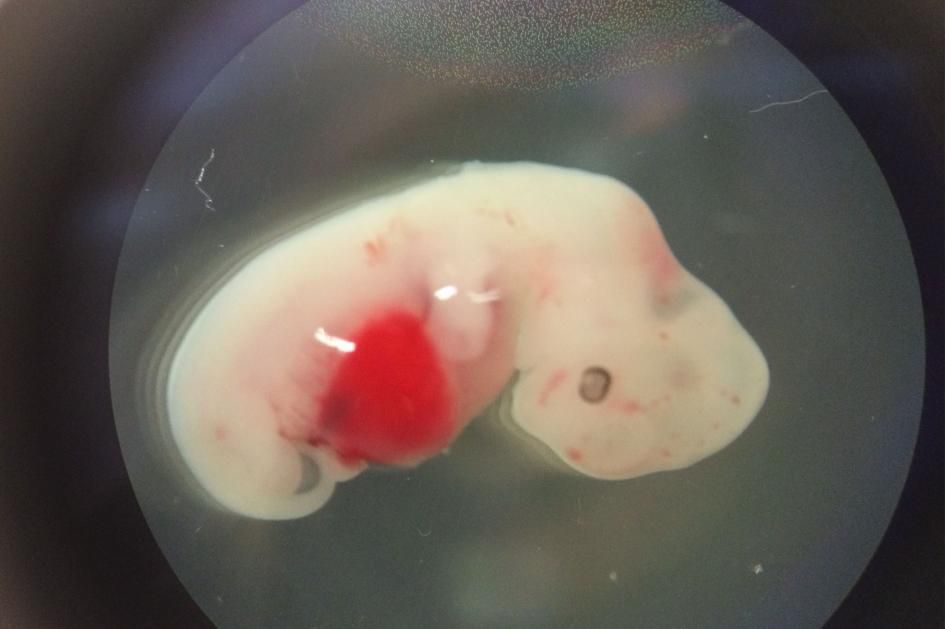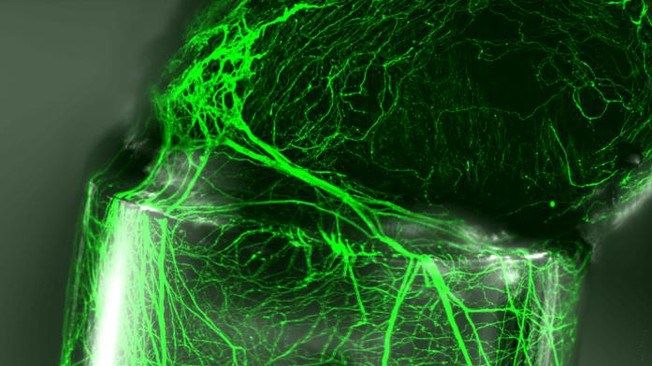Page 10517
Jan 28, 2017
Scientist Will Have Their Own March On Washington
Posted by Mark Larkento in category: neuroscience
Jan 28, 2017
The Ethics of Organoids: Scientists Weigh in on New Mini-Organs
Posted by Klaus Baldauf in categories: biotech/medical, ethics, neuroscience
Growing organs in the lab is an enduring sci-fi trope, but as stem cell technology brings it ever closer to reality, scientists are beginning to contemplate the ethics governing disembodied human tissue.
So-called organoids have now been created from gut, kidney, pancreas, liver and even brain tissue. Growing these mini-organs has been made possible by advances in stem cell technology and the development of 3D support matrices that allow cells to develop just like they would in vivo.
Unlike simple tissue cultures, they exhibit important structural and functional properties of organs, and many believe they could dramatically accelerate research into human development and disease.
Continue reading “The Ethics of Organoids: Scientists Weigh in on New Mini-Organs” »
Jan 28, 2017
Lawmakers Call For Halt To DARPA Program: Robots Repairing Satellites
Posted by Klaus Baldauf in categories: government, policy, robotics/AI, satellites

WASHINGTON: Three influential House lawmakers have asked DARPA in a Jan. 25 letter to review a robotic space repair program to see if it violates the National Space Policy by competing with private-sector efforts and to put the program on hold until the review is complete. The National Space Policy requires “that the government not build or buy systems that “preclude, discourage or compete” with commercial systems. Orbital ATK is building a system it believes competes directly with the DARPA initiative, known as Robotic Servicing of Geosynchronous Satellites.
It’s an intriguing program. DARPA’s goal is to develop robotic systems that can fix damaged satellites 22,000 miles up. In the words of the program web page, it would be designed to “make house calls in space.”
Continue reading “Lawmakers Call For Halt To DARPA Program: Robots Repairing Satellites” »
Jan 28, 2017
Hydraulic muscle makes for tougher, stronger disaster-site robots
Posted by Klaus Baldauf in categories: nuclear energy, robotics/AI, transportation

The idea of using robots as the go-to for handling disaster situations isn’t new, but part of the problem has been how to build robots light enough to move about easily, yet are strong enough and tough enough to handle things like a smashed up nuclear reactor. As part of the answer, the Tokyo Institute of Technology and Bridgestone Tires have partnered to develop a new hydraulic robotic muscle that is lightweight, yet is five to ten times as strong as conventional electric motors and much more durable.
The locations in disaster areas where the responders are needed most urgently are often the ones that are the hardest to get to, precisely because they’ve been hit so hard. The 2011 Fukushima nuclear disaster is a prime example. Despite the damage done to the nuclear power plant by the sea wave that struck it, the subsequent explosion and meltdown could have been avoided had emergency workers been able to reach it with the right equipment in time to make repairs and re-power the cooling systems.
Continue reading “Hydraulic muscle makes for tougher, stronger disaster-site robots” »
Jan 28, 2017
Human-Pig Hybrid Created in the Lab—Here Are the Facts
Posted by Amnon H. Eden in category: biotech/medical
This biomedical advance has long been a dream and a quandary for scientists hoping to address a critical shortage of donor organs.
Every ten minutes, a person is added to the national waiting list for organ transplants. And every day, 22 people on that list die without the organ they need. What if, rather than relying on a generous donor, you could grow a custom organ inside an animal instead?
Jan 28, 2017
Woman Survives After Being Frozen Solid
Posted by Shailesh Prasad in category: futurism
Brachistochrone is a Greek word which translates to the shortest time, and it refers to one of the questions posed by one of the Bernoulli’s brothers; Johann Bernoulli. If you want to move from point A to B in the quickest time possible what is the shortest time you can take. Most people will assume that the straight line will be the shortest and will take the least time which isn’t true.
Listen to the solution to this problem by Steven Strogatz here.
Jan 28, 2017
Forever Young? There’s Officially An Anti-Aging Pill For Dogs
Posted by Shane Hinshaw in categories: biotech/medical, life extension
In Brief:
- A drug seems to be showing signs of reversing the effects of aging in dogs and mice. Studies are being conducted on the effectiveness in humans.
- The drug has some major side effects linked to it and there is no guarantee it will be as effective in humans.
Aging is a spectre we all must face one day…but is this the way that it will always be? Medical researchers hope to delay or even reverse the onset of aging, and some are already claiming that they’ve made inroads to immortality.
Jan 27, 2017
Nanometric Imprinting on Fiber
Posted by Karen Hurst in categories: biotech/medical, materials
Researchers at EPFL’s Laboratory of Photonic Materials and Fibre Devices, which is run by Fabien Sorin, have come up with a simple and innovative technique for drawing or imprinting complex, nanometric patterns on hollow polymer fibers. Their work has been published in Advanced Functional Materials.
The potential applications of this breakthrough are numerous. The imprinted designs could be used to impart certain optical effects on a fiber or make it water-resistant. They could also guide stem–cell growth in textured fiber channels or be used to break down the fiber at a specific location and point in time in order to release drugs as part of a smart bandage.
















